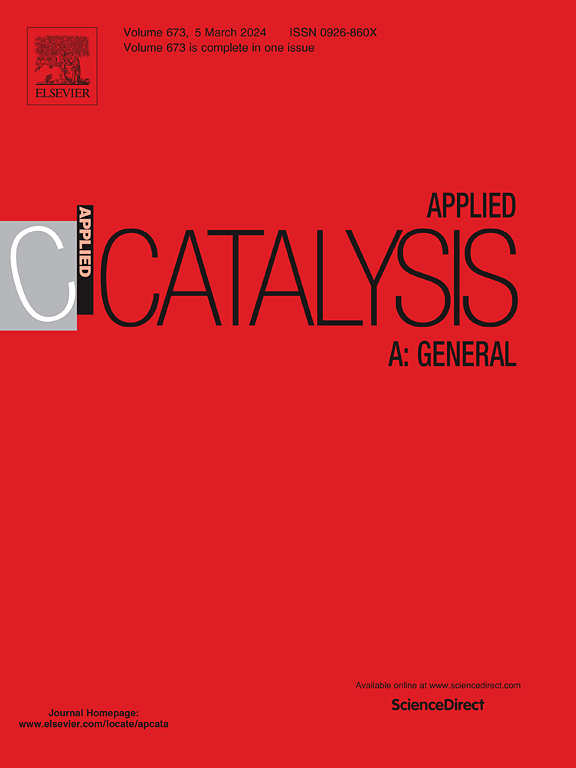Melamine paraformaldehyde polymer as an excellent support for hydroformylations of various alkenes
IF 4.7
2区 化学
Q2 CHEMISTRY, PHYSICAL
引用次数: 0
Abstract
Aldehydes are a vital class of fine chemicals, widely utilized as intermediates in drug synthesis, as well as in the production of fragrances and flavors. In industrial settings, aldehydes are predominantly synthesized through hydroformylation reactions. Numerous phosphorus-containing homogeneous and heterogeneous ligands or supports have demonstrated catalytic activity in this process. In this study, we synthesized a rhodium-modified, melamine-paraformaldehyde polymer-based heterogeneous catalyst by condensation followed by a hydrothermal method. The amine groups in the polymer effectively anchored the rhodium, resulting in well-dispersed Rh nanoparticles on the PMF support. The absence of FTIR bands at 2053 and 2143 cm-1 confirmed the dissociation of Rh-complex. The HR-TEM identified the presence of ultrasmall Rh nanoparticles ( Avg. 2.9 nm) on the polymer. The synthesized catalyst demonstrated excellent hydroformylation activity, achieving over 99% styrene conversion with 95% selectivity toward aldehyde products under optimized conditions and maintained performance over four cycles. Rh-PMFH catalyst showed high TON and TOF- 12,302, 2,050 h-1, respectively. In addition, the catalyst showed excellent activity for a broad substrate scope.

三聚氰胺多聚甲醛聚合物作为各种烯烃氢甲酰化的优良载体
醛是一类重要的精细化学品,广泛用作药物合成的中间体,以及香料和香料的生产。在工业环境中,醛主要是通过氢甲酰化反应合成的。许多含磷的均相和非均相配体或载体在该过程中表现出催化活性。在本研究中,我们通过缩合和水热法合成了一种铑修饰的三聚氰胺多聚甲醛聚合物基多相催化剂。聚合物中的胺基有效地固定了铑,从而在PMF载体上形成了分散良好的Rh纳米颗粒。在2053和2143 cm-1处没有FTIR波段,证实了rh配合物的解离。HR-TEM发现聚合物上存在超小的Rh纳米颗粒(平均粒径2.9 nm)。合成的催化剂表现出优异的氢甲酰化活性,在优化条件下,苯乙烯转化率超过99%,醛产物选择性为95%,并且在四个循环中保持了性能。Rh-PMFH催化剂具有较高的TON和TOF,分别为12,302和2,050 h-1。此外,该催化剂在广泛的底物范围内表现出优异的活性。
本文章由计算机程序翻译,如有差异,请以英文原文为准。
求助全文
约1分钟内获得全文
求助全文
来源期刊

Applied Catalysis A: General
化学-环境科学
CiteScore
9.00
自引率
5.50%
发文量
415
审稿时长
24 days
期刊介绍:
Applied Catalysis A: General publishes original papers on all aspects of catalysis of basic and practical interest to chemical scientists in both industrial and academic fields, with an emphasis onnew understanding of catalysts and catalytic reactions, new catalytic materials, new techniques, and new processes, especially those that have potential practical implications.
Papers that report results of a thorough study or optimization of systems or processes that are well understood, widely studied, or minor variations of known ones are discouraged. Authors should include statements in a separate section "Justification for Publication" of how the manuscript fits the scope of the journal in the cover letter to the editors. Submissions without such justification will be rejected without review.
 求助内容:
求助内容: 应助结果提醒方式:
应助结果提醒方式:


